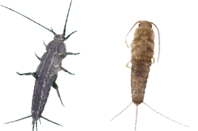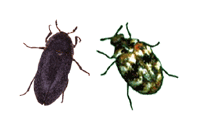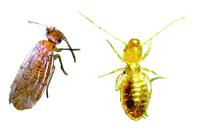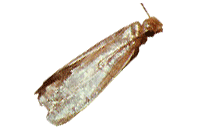Paper and Cloth Eaters
Rid your home of unwanted pests with guaranteed service from Eagle Pest Control. Eagle’s pest control maintenance service is designed to keep you home pest-free by creating a protective barrier around the exterior of your home. We use extremely effective, long-lasting products that are safe to use in homes, schools, day cares, and food service establishments.
Our full-service maintenance plans are inclusive of all general household pests. You will have a pest-free environment, both inside and outside of your home or business – Guaranteed.
For additional resources, surf to:
Your Trusted Choice for the Best in Pest Control
One Source for Many Resources
Eagle Lawn Service is a division of Eagle Lawn Service & Pest Control. We specialize in caring for your lawn, as well as riding your house of bugs, termites or other unwanted creatures. It’s your home. We provide a service that works so you don’t have to.
ADDITIONAL INFORMATION ON THESE COMMON PESTS:
Firebrat and Silverfish (Bristletails)
Silverfish and firebrats are similar species, sometimes both referred to as bristletails. Around a half an inch long, and gray in color, the silverfish can be distinguished by its shinier appearance. They don't like light, and hide in cracks and crevices until it's dark to come out and feed. Their favorite foods are things like oats, various types of cloth, and papers and pastes. Damage to books can be seen as holes or notches, or they can eat holes in curtains around the windowsill level. They can also be found hiding in clothes in the closet. Both types prefer moist areas, but the firebrat likes areas both hot and moist.

Carpet Beetle
Carpet beetles are named for their ability to eat things like fabrics, furs, and papers. There are a few types of carpet beetles found in this area, all with similar habits. The black carpet beetle is named for its solid coloring, the common carpet beetle is named for its frequent occurrence in carpets, and the varied carpet beetle is named for its strange markings. The adult beetles are around 3/16" long, but it's the larvae that cause most of the damage. During certain times of the year adult beetles eat pollen, so be careful of them on flowers you might be bringing into the house. They also lay eggs around animal nests outisde, so the larvae can hatch out and feed on feathers or fur present there. Carpet beetle larvae prefer natural fibers such as wool, fur, or silk - but will eat synthetic materials if they are soiled. Sometimes they will even feed on dead insects or old insect nests inside wall voids. The larvae don't like the light, and if they are disturbed they will curl up. But they are still adventurous, and will move from room to room in a house looking for food. The damage left by these pests can be, but is not always, holes in fabrics. They can eat just the hairs off of a fur, or eat the surface of fabric leaving threads behind. Sometimes when an infestation is happened upon, both the larvae and their skins are present. Since they look alike, this can make the problem seem bigger than it really is. In addition, the carpet beetle can be a pest in the kitchen. They eat all kinds of flour, grain, and spices - chewing through packaging to get them.

Booklice (Psocids)
Booklice are named for their slight similarity in appearance to lice, but aren't related to lice in any way. They aren't parasitic, and don't bite. Booklice are also called psocids, and are very small. Most of them are under 1/16" long, semi-transparent, and look almost like a termite. You will find these pests in humid areas, especially those with mold - their favorite food. Because they like moist and/or moldy items, they don't cause severe economic damage, as these items can be thrown out. However, they can get into new plaster, furniture, and damp basement areas.

Webbing Clothes Moth
The webbing clothes moth gets its name from the way the larva builds webbing around itself, and eats a diet of clothing fibers. The adult moths are around ½" long, and behave different from other moths you are used to seeing. Preferring the dark, you won't see them flying around sources of light - or even flying for that matter. They are poor flyers, so they usually choose to use their legs. Animal-based fabrics such as silks and wools are their favorite, but you can also find them on blended or soiled fabrics. The adults aren't destructive feeders, and merely a nuisance. Webbing clothes moth larvae are the ones who feed on household items. The larva can reach ½" long and like to hide deep under collars, or in rolled up items. You can see them partially sticking out of their white-colored woven cases they build around themselves.
